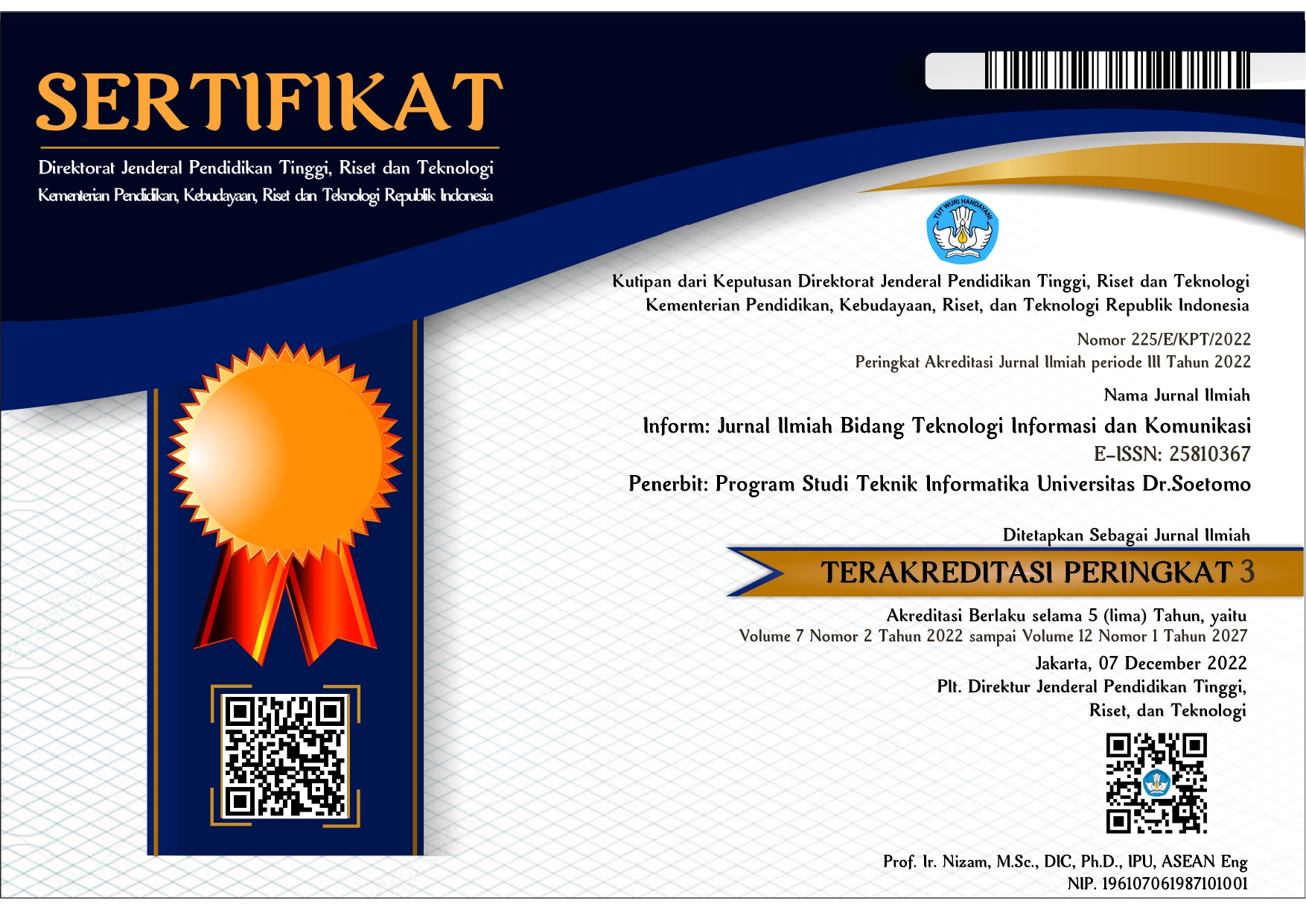Prototype Pengendalian Lampu Jarak Jauh Dengan Jaringan Internet Berbasis Internet of Things(IoT) Menggunakan Rasberry Pi 3
 Abstract views: 3063
,
Abstract views: 3063
,
 PDF (Bahasa Indonesia) downloads: 4125
PDF (Bahasa Indonesia) downloads: 4125
Abstract
Abstract— Internet of Thing (IoT) is a concept that aims to expand the benefits of internet connectivity that is connected continuously. Internet of thing (IoT) can be utilized on buildings to control electronic equipment such as operating room lights remotely through a computer network. Research is done by building a device remote control that utilizes internet technology to perform the process of control in the network local through a web server that is embedded into the remote control device. There are two features control is the control of a lamp used to turn on one light and features both controls lights overall to turn all lights on at one time. Trials which is done in prototype form. The last condition of Raspberry Pi pin that appears on the web the server is different from the last condition of the electronic equipment controlled on the lamp. Test results a try made on all features shows results as expected.
Keywords— Internet of Thing (IoT), Raspberry Pi 3, lamp, internet, web server.
Abstract — Internet of Thing (IoT) adalah sebuah konsep yang bertujuan untuk memperluas manfaat konektivitas internet yang terhubung terus menerus. Internet hal (IoT) dapat dimanfaatkan pada bangunan untuk mengendalikan peralatan elektronik seperti lampu ruang operasi jarak jauh melalui jaringan komputer. Penelitian dilakukan dengan membangun perangkat remote control yang memanfaatkan teknologi internet untuk melakukan proses pengendalian di jaringan lokal melalui server web yang disematkan ke perangkat remote control. Ada dua fitur kontrol yaitu kontrol lampu yang digunakan untuk menyalakan satu lampu dan fitur kedua kontrol lampu secara keseluruhan untuk menyalakan semua lampu pada satu waktu. Ujian yang dilakukan dalam bentuk prototipe. Kondisi terakhir dari pin Raspberry Pi yang muncul di web server berbeda dengan kondisi terakhir dari peralatan elektronik yang dikontrol pada lampu. Hasil uji coba yang dilakukan pada semua fitur menunjukkan hasil seperti yang diharapkan.
Kata kunci— Internet of Thing (IoT), Raspberry Pi 3, lamp, internet, web server.
References
[2] M. K. Arafat, “SISTEM PENGAMANAN PINTU RUMAH BERBASIS Internet Of Things ( IoT ) Dengan ESP8266,” J. Ilm. Fak. Tek. “Technologia,” vol. 7, no. 4, pp. 262–268, 2016.
[3] F. Panduardi and E. S. Haq, “Wireless Smart Home System Menggunakan Raspberry Pi,” J. Teknol. Inf. dan Terap., vol. 3, no. 1, pp. 320–325, 2016.
[4] D. Prihatmoko, “PENERAPAN INTERNET OF THINGS ( IoT ) DALAM PEMBELAJARAN DI,” Simetris, vol. 7, no. 2, pp. 567–574, 2016.
[5] I. H. Santoso and K. Ramli, “Internet of Things : Visi , Arah Kedepan , Dan Teknologi Kunci,” SENTIKA, vol. 2016, no. Sentika, pp. 18–19, 2016.
[6] H. M. Shadiq, “Perancangan kamera pemantau nirkabel menggunakan raspberry pi model b,” Transient, Vol. 3, No. 4, Desember 2014, vol. 3, no. 4, pp. 1–6, 2014
[7] I. Warangkiran, I. S. T. G. Kaunang, A. S. M. Lumenta, and A. M. R. St, “Perancangan Kendali Lampu Berbasis Android,” e-jurnal Tek. Elektro dan Komput., vol. 1, pp. 1–8, 2014.
Copyright (c) 2018 Rometdo Muzawi, Yoyon Efendi, Nori Sahrun

This work is licensed under a Creative Commons Attribution-ShareAlike 4.0 International License.
Authors who publish with Inform: Jurnal Ilmiah Bidang Teknologi Informasi dan Komunikasi agree to the following terms:
-
Authors retain copyright and grant the journal right of first publication with the work simultaneously licensed under a Creative Commons Attribution License (CC BY-SA 4.0) that allows others to share the work with an acknowledgment of the work's authorship and initial publication in this journal.
-
Authors are able to enter into separate, additional contractual arrangements for the non-exclusive distribution of the journal's published version of the work (e.g., post it to an institutional repository or publish it in a book), with an acknowledgment of its initial publication in this journal.
-
Authors are permitted and encouraged to post their work online (e.g., in institutional repositories or on their website) prior to and during the submission process, as it can lead to productive exchanges, as well as earlier and greater citation of published work.












